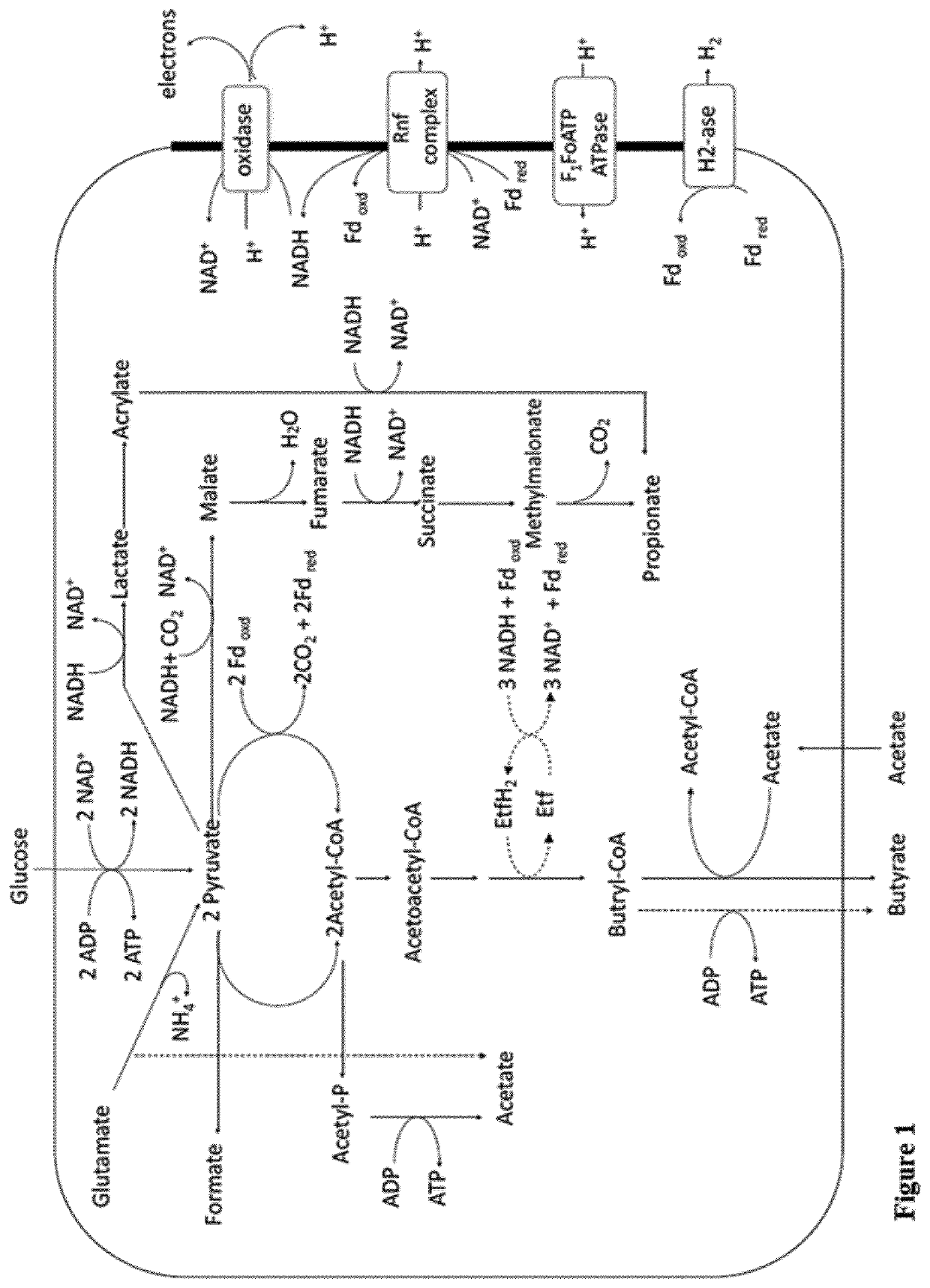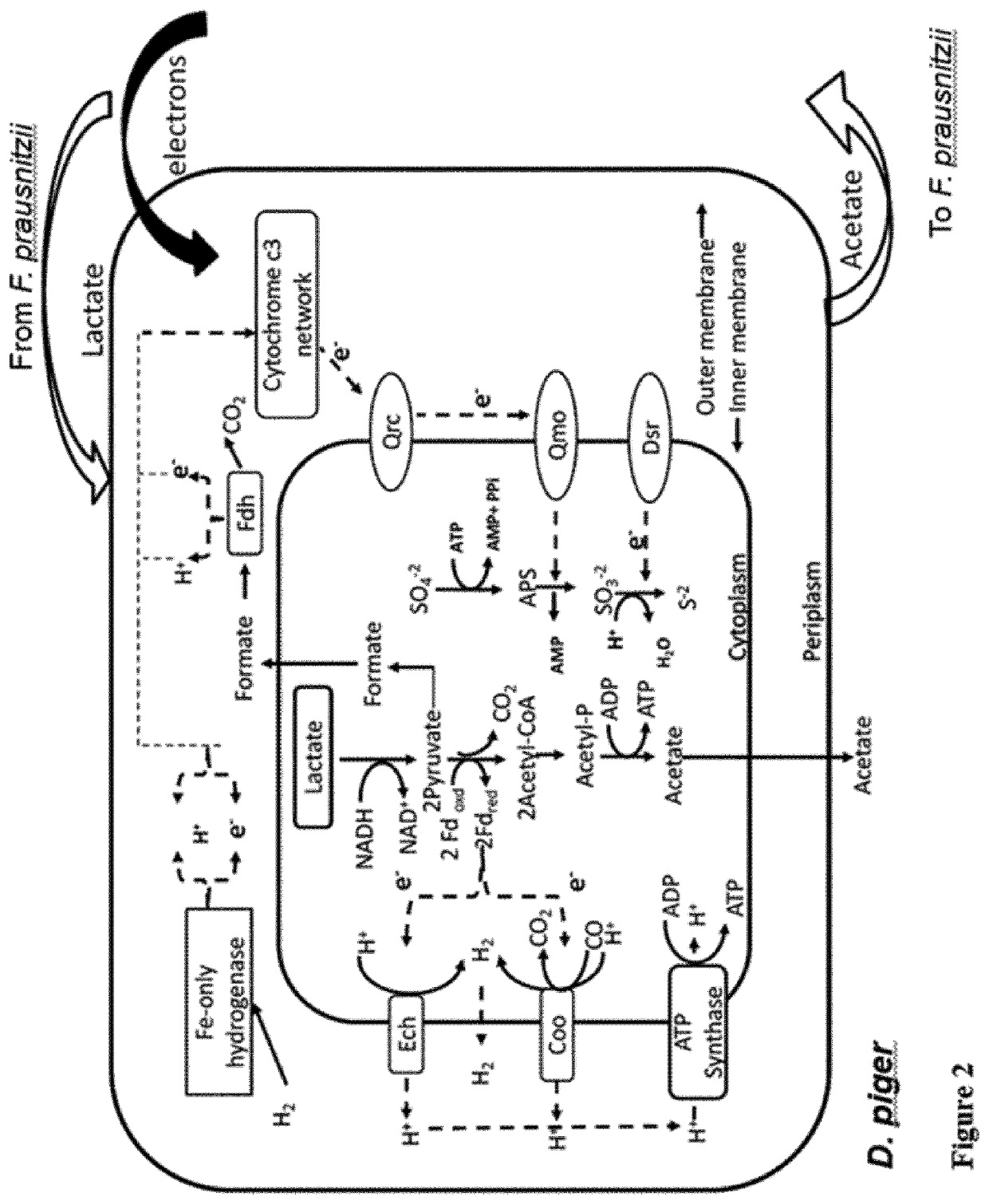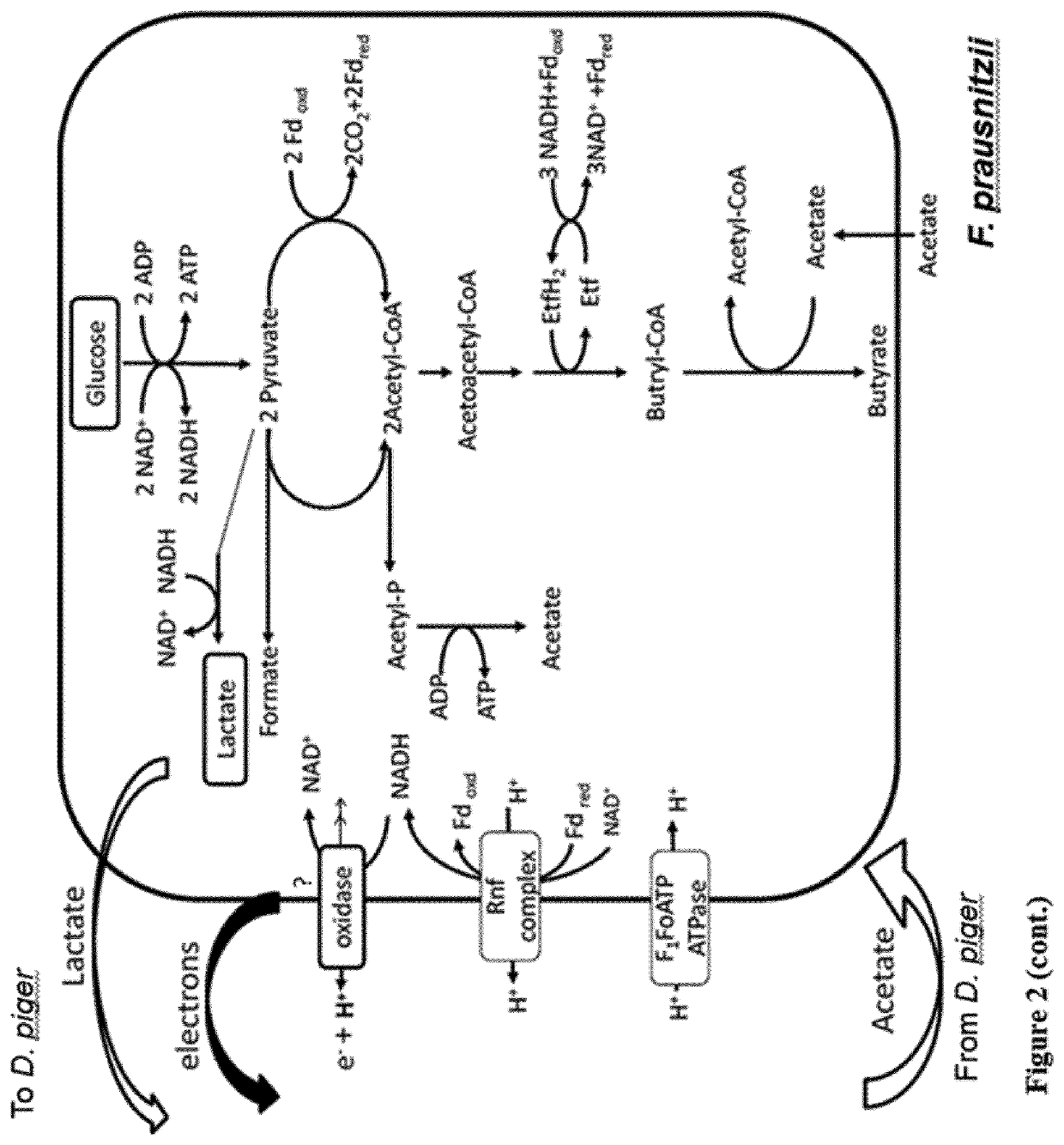Faecalibacterium prausnitzii and Desulfovibrio piger for use in the treatment or prevention of diabetes and bowel diseases
a technology of faecalibacterium prausnitzii and desulfovibrio piger, which is applied in the field of medicine, can solve the problems of largely unstudied human development, almost entirely unknown influence of physiology, and many, if not most, have never been successfully isolated as viable specimens for analysis
- Summary
- Abstract
- Description
- Claims
- Application Information
AI Technical Summary
Benefits of technology
Problems solved by technology
Method used
Image
Examples
example 1
Isolation of Faecalibacterium prausnitzii and Desulfovibrio piger as Co-Culture
[0126]Surprisingly, Faecalibacterium prausnitzii FBT-22 (DSM 32186) and Desulfovibrio piger strain FBT-23 (DSM 32187) were isolated from the feces of healthy volunteer by microbiological pure culture technique under strict anaerobic condition (5% H2, 15% CO2 and 80% N2) employed in a Coy chamber. The Postgate medium (PGM) was employed as routine culture medium for isolation and cultivation. The PGM contains (g / L); dipotassium phosphate: 0.5 g; ammonium chloride: 1; sodium lactate: 3.5; yeast extract: 1; Ascorbate: 0.1; cysteine: 0.5; sodium chloride: 1; peptone: 10; sodium sulphate: 1; calcium chloride dehydrate: 1; magnesium sulphate: 2; ferrous sulphate heptahydrate: 0.5. Sodium sulphate, magnesium sulphate heptahydrate, calcium chloride dehydrate were autoclaved separately while ferrous sulfateheptahydrate was filter sterilized 0.22 μm filter and added after autoclaving and mixing of all components. Th...
example 2
Alternative Isolation of a Strain of F. prausnitzii
[0129]A F. prausnitzii strain is isolated from the feces of a healthy volunteer by microbiological pure culture technique under strict anaerobic condition (5% H2, 15% CO2 and 80% N2) employed in a Coy chamber. The routine culture medium for isolation contains following (g / L); yeast extract: 2.5; casitone: 10; glucose: 4.5; sodium chloride: 0.9; dipotasium phosphate: 0.45; potassium dihydrogen phosphate: 0.45; ammonium sulfate: 1.32; sodium bicarbonate: 4 g; cysteine: 1; resazurin: 0.001; hemin: 0.01. Vitamin mix contains: 10 μg biotin, 10 μg cobalamin, 30 μg p-aminobenzoic acid, 50 μg folic acid and 150 μg pyridoxamine. Final concentrations of short-chain fatty acids (SCFA) in the medium are 33 mM acetate, 9 mM propionate and 1 mM each of isobutyrate, isovalerate and valerate. All components are added aseptically while the tubes are flushed with CO2. Heat labile vitamins are filter sterilized with 0.22 μm filter and added after the...
example 3
Alternative Isolation of a Strain of Desulfovibrio piger.
[0130]A Desulfovibrio piger strain is isolated from the feces of healthy volunteer by microbiological pure culture technique under strict anaerobic condition (5% H2, 15% CO2 and 80% N2) employed in a Coy chamber. The Postgate medium (PGM) is employed as routine culture medium for isolation and cultivation.
[0131]The postgate medium contains following (g / L); dipotassium phosphate: 0.5 g; ammonium chloride: 1; sodium lactate: 3.5; yeast extract: 1; Ascorbate: 0.1; cysteine: 0.5; sodium chloride: 1; peptone: 10; sodium sulphate: 1; calcium chloride dehydrate: 1; magnesium sulphate: 2; ferrous sulphate heptahydrate: 0.5. Sodium sulphate, magnesium sulphate heptahydrate, calcium chloride dehydrate are autoclaved separately while ferrous sulfate heptahydrate is filter sterilized 0.22 μm filter and added after autoclaving and mixing of all components. The final pH of the medium is adjusted with 1N NaOH or 1N HCl to 7.2±0.2.
[0132]The ...
PUM
 Login to View More
Login to View More Abstract
Description
Claims
Application Information
 Login to View More
Login to View More - R&D
- Intellectual Property
- Life Sciences
- Materials
- Tech Scout
- Unparalleled Data Quality
- Higher Quality Content
- 60% Fewer Hallucinations
Browse by: Latest US Patents, China's latest patents, Technical Efficacy Thesaurus, Application Domain, Technology Topic, Popular Technical Reports.
© 2025 PatSnap. All rights reserved.Legal|Privacy policy|Modern Slavery Act Transparency Statement|Sitemap|About US| Contact US: help@patsnap.com



